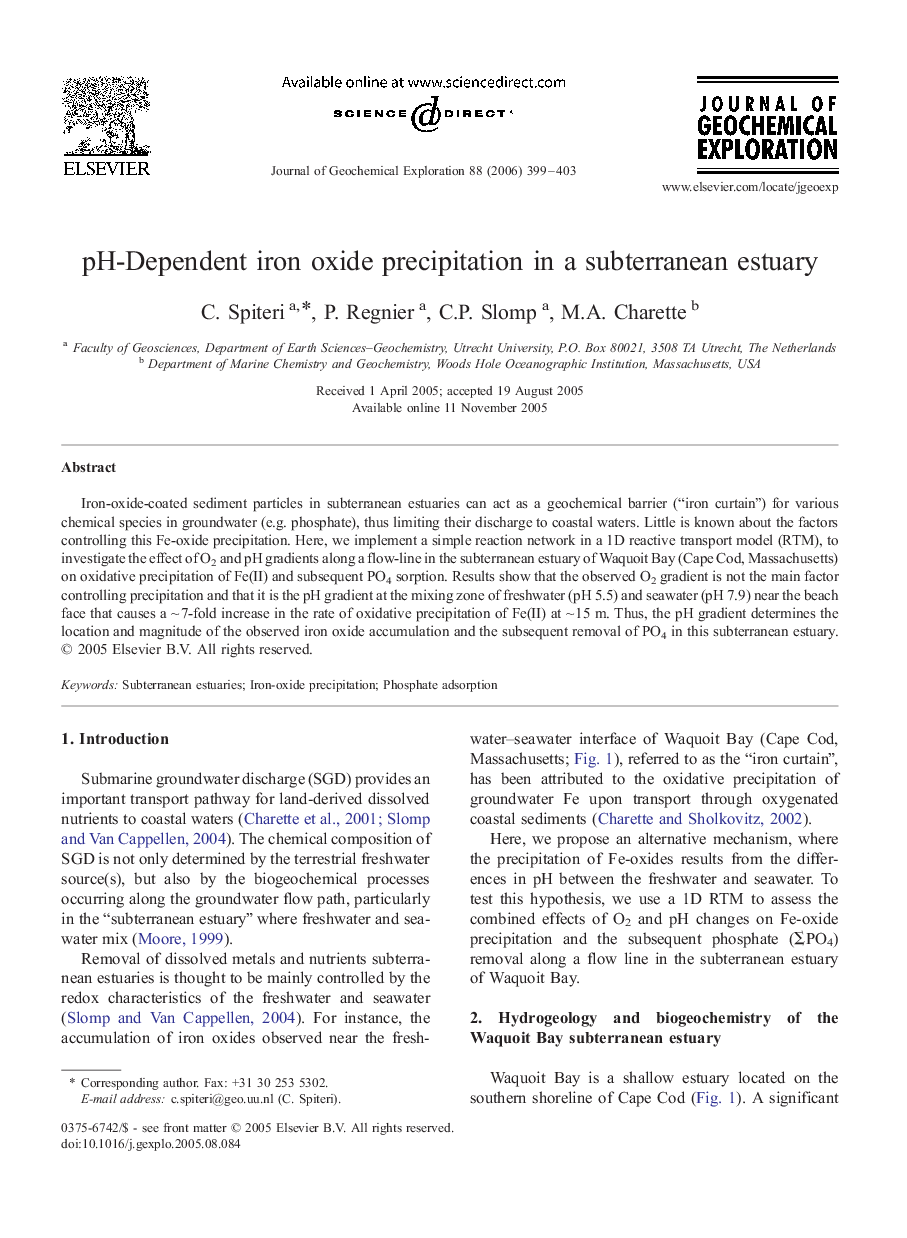| Article ID | Journal | Published Year | Pages | File Type |
|---|---|---|---|---|
| 4458612 | Journal of Geochemical Exploration | 2006 | 5 Pages |
Iron-oxide-coated sediment particles in subterranean estuaries can act as a geochemical barrier (“iron curtain”) for various chemical species in groundwater (e.g. phosphate), thus limiting their discharge to coastal waters. Little is known about the factors controlling this Fe-oxide precipitation. Here, we implement a simple reaction network in a 1D reactive transport model (RTM), to investigate the effect of O2 and pH gradients along a flow-line in the subterranean estuary of Waquoit Bay (Cape Cod, Massachusetts) on oxidative precipitation of Fe(II) and subsequent PO4 sorption. Results show that the observed O2 gradient is not the main factor controlling precipitation and that it is the pH gradient at the mixing zone of freshwater (pH 5.5) and seawater (pH 7.9) near the beach face that causes a ∼ 7-fold increase in the rate of oxidative precipitation of Fe(II) at ∼ 15 m. Thus, the pH gradient determines the location and magnitude of the observed iron oxide accumulation and the subsequent removal of PO4 in this subterranean estuary.
